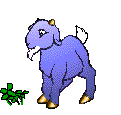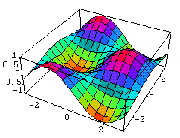|
Blue Print 29 (45%)

estimate and round
1.11 Estimate, round, and manipulate very large (e.g., millions) and very small (e.g., thousandths) numbers.
|

compare and rank
1.25 Interpret percents as a part of a hundred; find decimal and percent equivalents for common fractions and explain why they represent the same value; compute a given percent of a whole number.
|

multiply
1.31 Understand and compute positive integer powers of nonnegative integers; compute examples as repeated multiplication
| Teach |
Practice |
Assess |
| |
3
X |
|
| |
|
|
| |
|
|
1.43 Determine the prime factors of all numbers through 50 and write the numbers as the product of their prime factors by using exponents to show multiples of a factor (e.g., 24 = 2 × 2 × 2 × 3 = 23 × 3).
|

compare and rank
1.5 2 Identify and represent on a number line decimals, fractions, mixed numbers, and positive and negative integers.
|
|
|

estimate and round
2.0
Students perform
calculations and
solve problems involving
addition, subtraction,
and simple multiplication
and division of fractions
and decimals.

Key Standard
2.1 7 Estimate, round, and manipulate very large (e.g., millions) and very small (e.g., thousandths) numbers.
|
|
|
2.23 Demonstrate proficiency with division, including division with positive decimals and long division with multidigit divisors.

Key Standard
2.35 Solve simple problems, including ones arising in concrete situations, involving the addition and subtraction of fractions and mixed numbers (like and unlike denominators of 20 or less), and express answers in the simplest form.
|
2.41 Understand the concept of multiplication and division of fractions.
2.51 Compute and perform simple multiplication and division of fractions and apply these procedures to solving problems.
|
|

Solving Equations

Key Standard
1.26 Use a letter to represent an unknown number; write and evaluate simple algebraic expressions in one variable by substitution.
|
|
|
Properties
1.31 Know and use the distributive property in equations and expressions with variables.
|

Charts, Data,
Function Tables and Graphs

Key Standard
1.44 Identify and graph ordered pairs in the four quadrants of the coordinate plane.
|

Key Standard
1.5 5 Solve problems involving linear functions with integer values; write the equation; and graph the resulting ordered pairs of integers on a grid.
|
|
|
|

Formulas
1.1 2 1/2 Derive and use the formula for the area of a triangle and of a parallelogram by comparing it with the formula for the area of a rectangle (i.e., two of the same triangles make a parallelogram with twice the area; a parallelogram is compared with a rectangle of the same area by cutting and pasting a right triangle on the parallelogram).
1.21/2Construct a cube and rectangular box from two-dimensional patterns and use these patterns to compute the surface area for these objects.
1.33 Understand the concept of volume and use the appropriate units in common measuring systems (i.e., cubic centimeter [cm 3], cubic meter [m3], cubic inch [in 3], cubic yard [yd3]) to compute the volume of rectangular solids.

Formulas
1.4 Differentiate between, and use appropriate units of measures for, two- and three-dimensional objects (i.e., find the perimeter, area, volume).
|

Building
2.11 Measure, identify, and draw angles, perpendicular and parallel lines, rectangles, and triangles by using appropriate tools (e.g., straightedge, ruler, compass, protractor, drawing software)..
|

Formulas

Key Standard
2.24 Know that the sum of the angles of any triangle is 180° and the sum of the angles of any quadrilateral is 360° and use this information to solve problems.
|
|
|
2.31 Visualize and draw two-dimensional views of three-dimensional objects made from rectangular solids
|
|
|
|
Blue Print 4 (6%)

Charts, Data,
Function Tables and Graphs
1.11/3 Know the concepts of mean, median, and mode; compute and compare simple examples to show that they may differ.
1.21/3 Organize and display single-variable data in appropriate graphs and representations
(e.g., histogram, circle graphs) and explain which types of graphs are appropriate
for various data sets.
|

compare
and rank
1.31/3 Use fractions and percentages to compare data sets of different sizes.
|

Charts, Data, Function Tables and Graphs
1.421/2 Identify ordered pairs of data from a graph and interpret the meaning of the data
in terms of the situation depicted by the graph.
1.5 1/2 Know how to write ordered pairs correctly; for example, (x, y).
|
|
|

Math Reasoning
|
Embedded
1.1 Analyze problems by identifying relationships, distinguishing relevant from
irrelevant information, sequencing and prioritizing information, and observing
patterns.
1.2 Determine when and how to break a problem into simpler parts.
2.0
Students use strategies, skills, and concepts in finding solutions:
2.1 Use estimation to verify the reasonableness of calculated results.
2.2 Apply strategies and results from simpler problems to more complex problems.
2.3 Use a variety of methods, such as words, numbers, symbols, charts, graphs, tables,
diagrams, and models, to explain mathematical reasoning.
2.4 Express the solution clearly and logically by using the appropriate mathematical
notation and terms and clear language; support solutions with evidence in both
verbal and symbolic work.
2.5 Indicate the relative advantages of exact and approximate solutions to problems
and give answers to a specified degree of accuracy.
2.6 Make precise calculations and check the validity of the results from the context
of the problem.
3.0 Students move beyond a particular problem by generalizing to other situations:
3.1 Evaluate the reasonableness of the solution in the context of the original situation.
3.2 Note the method of deriving the solution and demonstrate a conceptual understanding
of the derivation by solving similar problems.
3.3 Develop generalizations of the results obtained and apply them in other circumstances.
|
|
![]()
![]()